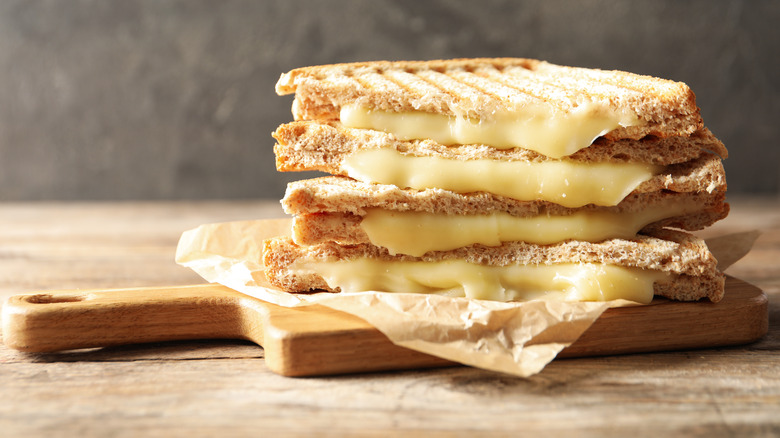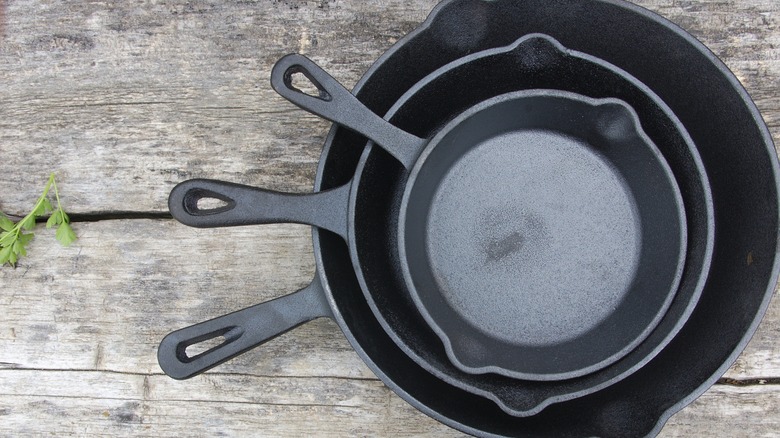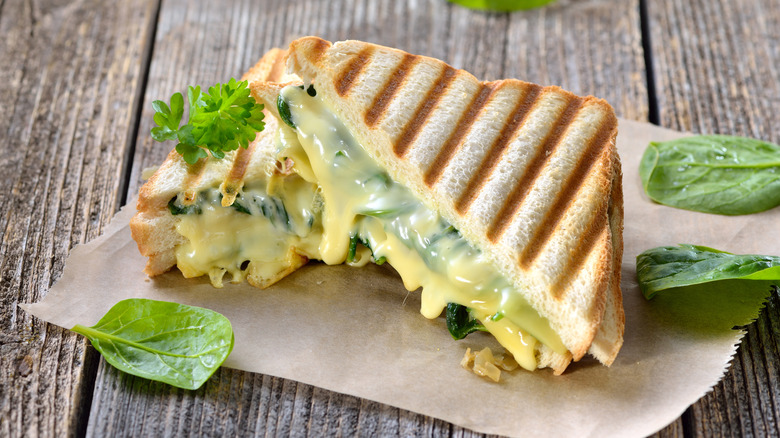2 Skillets Are The Key To A Perfectly Upgraded Grilled Cheese
Is there such a thing as the perfect grilled cheese? Perhaps it's in the eye of the beholder. But there are definitely ways to enhance this simple classic, whether it's the type of bread, the cheese, or the cooking process itself. Yes, cooking a grilled cheese in a cast-iron pan will get you that crispy, lightly caramelized exterior, but if you're using a hearty bread and want to upgrade your sandwich with that panini-style take, then you'll actually need two cast iron pans — one to grill the sandwich, and another to weigh it down.
The best grilled cheese has both a crunchy exterior and cheese that's melted so well it oozes right out the moment you slice the sandwich. But adding that second cast-iron pan to the process will transform the dish by pressing it together; you only have to do this before you flip it, though. After that, let it cook weightless on its own to ensure it doesn't get too thin.
Make the best grilled cheese with cast iron
Cast iron is a long-standing kitchen tool because of its durability and nonstick nature. It's great for a perfectly grilled cheese, but when you're whipping up this sandwich, both the bread and the cheese matter. If you use the weighted cast-iron trick, make sure you use the right bread. Something hearty, like Italian or ciabatta, is what works here. If you use a delicate bread, such as thin white bread, you'll end up with a grilled cheese that's too flat.
To avoid a mess, don't add softened butter — or you can substitute mayonnaise — to the top piece of bread before weighing it down. Instead, add it only to the bottom piece, then rest the second cast iron pan on top of the sandwich while the bottom crisps up. Leave the pan on for several minutes, or until the bottom piece of bread is crispy and the sandwich is ready to flip. From there, remove the pan, add softened butter or mayo, then flip it. Let the grilled cheese cook without cast iron for the remainder of the cooking process.
Tips for the perfect grilled cheese
The bread is important here since bread with a crusty top will work better with the weight of your cast iron cookware, but that isn't the only thing that matters. Cheese choice is essential. You want something that melts with ease to make sure the cheese is fully melted by the time the bread is toasted. Classic American cheese is hard to beat, but cheddar or even Gruyère are great options as well.
It's safe to use both butter and mayonnaise on cast iron, so your choice comes down to personal preference. You'll only need about a tablespoon for each side of the bread. Keep the heat no higher than medium — the bread can't toast too quickly, or the cheese won't have enough time to melt. And if you're adding toppings, stay mindful of how this could impact cooking time. Those toppings will cause the heat to reach the cheese more slowly, so if you're adding something like tomatoes or bacon in between the cheese and bread, you might want to set the heat to low to ensure the cheese has plenty of time to melt.


